| |
|

SUNDAY. SEPTEMBER 7, 2008Ner Tamid Synagogue Open House and Barbeque

FRIDAY, SEPTEMBER 12, 2008 Temple Solel S'more Shabbat
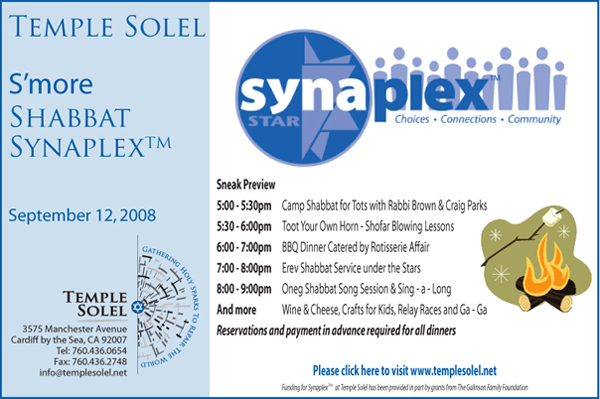
 
MON., SEPT. 29-THURS., OCT. 9


Please actively support San Diego Jewish World

LETTER FROM JERUSALEM
Unlike Americans, Israeli families of politicians usually stay out of limelight
By Ira Sharkansky
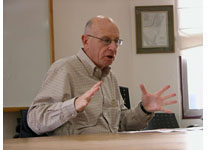 JERUSALEM—Family pictures featured in Democratic and Republican campaigns, and the great concern with the Palins, contrast mightily with the style of Israeli politics. JERUSALEM—Family pictures featured in Democratic and Republican campaigns, and the great concern with the Palins, contrast mightily with the style of Israeli politics.
Tzipi Livni is the leading candidate to take over Ehud Olmert's position as prime minister. It was only last week, when I used Google to clarify when she was first appointed to a major position, that I learned there was a husband, Naftali Spitzer, and two children. Livni was appointed to head a government office in 1996, elected to the Knesset in 1999, and has held positions as minister heading one or another government department since 2001.I have never seen a picture of her family.
Nor do I know anything about the families associated with Livni's competitors for Olmert's position (Shaul Mofaz, Avram Dicter, and Meir Shitrit).
Shimon Peres has held prominent appointed and elected positions for 56 years. I have lived here for 33 years, and doubt that I have seen a total of 10 media minutes devoted to his family. When selected as Israel's president last year, his wife decided not to move into the official residence in Jerusalem. She preferred to stay in the family apartment in Tel Aviv. That barely merited a minute of prime time.
There are some politicians who have chosen to highlight family members. Perhaps the effort was to see how the American emphasis would play here.
For the most part, it has not played well.
Ehud Barak's photogenic first wife appeared alongside of him on numerous occasions. Their divorce received little attention. Second wife also accompanies him at public occasions, and has cost him support. The attention has concerned her public relations company, said to have sold opportunities to meet with government people who would have some role in buying the goods or services of the companies shelling out the money. After a few days of attention, the second Mrs. Barak disbanded her company.
Benyamin Netanyahu emphasized his wife, Sarah, and their two children during his term as prime minister from 1996 to 1999. He may have suffered even more than Barak from the exposure. The media emphasized an extravagant life style, occasionally paid for in ways that appear improper. The police investigated, and there was a civil suit by a supplier who claimed that he was not paid. There were also stories about problems at home. The BBC reported that an employee with 30 years' service at the Prime Minister's house found herself under a barrage of shoes when Sarah did not like the way they had been cleaned.
Netanyahu seems to have kept his wife out of the public eye in his most recent roles as leader of the parliamentary opposition and occasional front runner as potential prime minister. Nonetheless, there have been uncomplimentary stories about the couple's overseas trips and plush hotels. Key aides have fallen out with Netanyahu and left his entourage. Reports are that they had problems working with Sarah, who insists on a role in political decisions.
Netanyahu's father, Benzion, remains active into his 90s, and had his own career as university professor and political activist. He has not appeared in the coverage devoted to the family. Speculation is that views to the right of even Benyamin have led him or his son to keep their relationship out of the public eye.
Aliza Olmert is a writer and artist, and occasionally appears in the media hosting events at the prime minister's residence. Her politics, somewhat to the left of Ehud's, have garnered both praise and criticism. There has been praise for the tolerance of different paths chosen by husband and wife, and criticism by those who assert that Ehud's leftward drift reflects Aliza's influence.
Some will argue that detailed knowledge of politicians' families provides insight as to how they are likely to behave in the public sphere.
On the other hand, selecting a candidate to support is difficult enough without factoring in the beauty or activity of spouses, or the lives chosen by offspring or parents.



GUEST COLUMN
Rabbi overcomes odds in Italy’s south
By Karen Primack
SERRASTRETTA, Italy—Rabbi Barbara Aiello lives in a 400-year-old house in Serrastretta, a small mountain town in Calabria, in the extreme south of Italy. She has converted the bottom floor into a synagogue (Ner Tamid del Sud) and a Jewish culture center in order to pursue her life’s work – to serve returning Bnai Anousim (descendants of victims of the Spanish Inquisition forced to convert to Roman Catholicism) in Calabria and Sicily.
My husband Aron and I visited Aiello last Passover, anxious to meet some of the members of her community returning to Judaism after a 500-year interruption.
Aiello, an Italian-American whose family members were among those Anousim, has been serving as a Liberal rabbi in Italy for five years, first in Milan and then in Calabria. She is Italy’s first and only female rabbi.
Aiello was delighted to be able to buy a portion of her house in Serrastretta, for it has been in her family for most of its 400-year history. Although she was born and raised in the US, she still has a large family in Italy – some 70 relatives.
Serrastretta is near the city of Nicastro, a town with a once-flourishing Jewish community. In the 1920s her father would ride down the mountain from Serrastretta in a horse-drawn wagon filled with artichokes to study Bible and a little Hebrew with a scholar in Timpone, the Jewish quarter of Nicastro. When Aiello took her father back to the Timpone in the 1970s, after a decades-long absence, he kissed the ground and cried.
Aiello likes to bring visitors to Timpone, emphasizing that the place was similar to so many other areas in Southern Italy. She says, “Timpone was a Jewish quarter, meaning that, unlike a ‘ghetto,’ where Jews were locked in from the outside, in Calabria and Sicily Jews lived in ‘quarters,’ which were open and offered free passage.” She pointed out signs pasted to walls in the quarter announcing “Ricorrenza il tredicesimo della scomparsi di Rosario Bandiera” or “La cena doppo sette giorni per Aprile Pasquale Bagnato.” (Thirteenth anniversary of the death of Rosario Bandiera; The meal after seven days for Aprile Pasquale Bagnato.) She cites these surnames – Bandiera, Bagnato, and Aprile – as examples of common Jewish names and says the continuation of practices such as remembering the anniversary of a death or having a meal after the seven-day mourning period are remnants of Jewish traditions of which few Calabrians are aware.
There are two streams (torrenti) running through Timpone. The Jews, who brought the silk and leather trades there in the 12th century, needed the moving water for their work. Aiello noted that Jews were taxed separately, that they were sometimes money-lenders, and that Jews started the institution of banking in Naples.
Aiello’s experience with the Catholic Church in Nicastro has been mixed. When she speaks, she refers to the spirit of dialogue espoused by Pope John Paul II, who referred to the Jews as “big brothers” of the Catholics. She says her purpose is to help Bnai Anousim understand their past, since this leads to a better future – whether or not they choose to return to Judaism. When she first arrived in Nicastro, two years ago, local priests were eager to have their congregants learn more about their Jewish heritage. In recent months, however, this has changed. Some say that the bishop is less than enthusiastic about discussing what has become the well-publicized historical Jewish presence in the area and has passed on this attitude to his parish priests.
Aiello identified a small church in Timpone that modern historians such as Prof. Vincenzo Villella, author of La Judecca di Nicastro, document as once having been the local synagogue. One clue is its rose window, in which the remnant of a Star of David can be seen. She also points to the squat shape of the building, typical of medieval synagogues but atypical of churches. There were also rumors of Jewish artifacts being found there. Interestingly enough, after Aiello suggested that the Jewish community might rent the dilapidated church for occasional synagogue use, the diocese suddenly commenced a grand renovation project, now complete, even though there is no active parish or priest assigned to the church and a symbolic mass is held only once a week.
Near the church is a garden containing a structure Aiello suspects was a mikveh (Jewish ritual bath). The owner of the mikveh garden, whose 90-year-old mother remembers parts of her Jewish past, was once supportive of the rabbi and her Jewish visitors. He even opened the garden to a Shavuot service two years ago. Unfortunately, he has now asked Aiello to make other plans because he has been told that his local business might suffer if he continues to promote the Jewish presence in Timpone. Aiello’s reaction to the situation is philosophical. She recalls that recent European history has included incidents where local communities were asked to return confiscated property to its rightful Jewish owners. “It could be that the locals are fearful,” she says.
Aiello also occasionally serves Liberal congregations and havurot in other parts of Italy. Among them is Turin’s Congregation Or Chadash, where she is official rabbi. She is responsible for 54 conversions in her five years in Italy. These are accomplished through the World Union of Progressive Judaism, which holds one Beit Din each year in Italy or elsewhere in Europe. Aiello is proud of her accomplishment in winning for Anousim a “Status Recognition” certificate, which includes the same study requirements as those for converts, but which affirms a Jewish heritage that had been stolen or nearly erased by the Inquisition or other persecutions.
Aiello says that her work is inspired by Gary A. Tobin’s 1999 book, Opening the Gates: How Proactive Conversion Can Revitalize the Jewish Community. From Tobin she learned how to extend the hand of Jewish welcome to newcomers and she counts Tobin among her supporters.
One of her favorite topics is extremism in religion, including Christianity, Islam, and Judaism. She recently participated in a conference on Physical and Mental Abuse of Women Hidden in Religious Extremism, together with a Catholic nun and a Muslim woman.
Aiello is dedicated to teaching her new Jewish congregants that tikun olam (“repair of the world,” a basic tenet of Progressive Judaism) involves the whole world, and not just Jews. To that end, her congregants work with her to organize La Scuola sul Marcipiede (the Sidewalk School) so that the children of Rom (Gypsy) mothers can learn to read, write, and count while their mothers beg for money on local street corners.
On the first seder night, we found ourselves in the Serrastretta shul, Ner Tamid del Sud (Everlasting Light of the South) with 23 other participants, six of whom had arrived unexpectedly. Aiello led, assisted by Salvo Parrucca, one of her Anous converts, who hopes to become a rabbi one day. (Parrucca was in the US and spoke before Kulanu gatherings in Washington and New York last year.)
Aside from the seven guests from the US and Australia, the group was composed of Italians with a Jewish family background who are exploring the religion. (One of the guests was Enrico Tromba, an archeologist who has done excavating of a Roman-era synagogue in Bova Marina.) We used a Liberal haggadah printed in Italian and Hebrew, with some Hebrew transliterations.
In addition, Aiello, a former puppeteer, created a script for the Passover story (Maggid di Pesach), written in such a way that the character can choose to read his/her part in either Italian or English. It was a delightful mishmash, as guests read in English and the locals responded in Italian. Characters were suited to children and adults and included a narrator, Yocheved (Moses’s mother), Baby Moses (who at different times said “Waaa!!!” or “Gooo…gooo”), Moses, Sheep (“Baaa”), the Voice of God, the pharaoh, and Miriam. Sound effects (fingers tapping on the table) were prescribed for the gallop of pharoah’shorses.
After we were seated, the Passover platter made a grand entrance, and was passed around from guest to guest, held up over each head to demonstrate that we were once slaves in Egypt and carried heavy burdens on our heads. This is an ancient Passover tradition specific to the South of Italy. Centerpieces consisted of large bowls of charoset beautifully decorated with pine nuts. Ingredients included oranges, dates, figs, almonds, and apple.
Another custom new to us was the application of scallions in a whipping fashion on the next person during the singing of the chorus of Dayenu, to recall our days of slavery. This was a real crowd pleaser and ice-breaker.
Aron and I contributed one of our favorite seder rituals – reading the Four Questions in Luganda, the language of the Abayudaya – as a reminder that Jews everywhere celebrate the holiday at the same time.
The seder meal consisted of chicken rice soup (rice is kosher for Pesach in Sephardic cultures), roast lamb with salad, and a fruit cup.
Aiello led a second-night seder for her congregants at the Progressive Or Chadash synagogue in Turin, several hundred miles to the North. Held at the local children’s theater venue, 62 parents, children and Nonni (grandparents) were in attendance.
We rejoined her on the fifth night for a more intimate seder in Selinute, in the South of Sicily, where we found a delightful family of four. The rabbi explained that there is a custom for a fifth-night seder among Anousim in Italy, who knew Inquisition authorities would be watching them on the first and second nights. There is a double meaning, since hamishi means five, and its derivative hamishe means friendly (coming from the five fingers on the hand of friendship). Legend has it that Christian friends helped the Jews plan that event and kept it secret from Inquisition authorities. The tradition of the Hamishi Seder continues to this day, and it proceeded like the first night’s seder, except that it was completely in Italian and Hebrew (Aron and I have been studying Italian for a few years). The two young children couldn’t get enough of Dayenu. The menu consisted of matzah bruschetta with chopped tomatoes, garlic, basil, and olive oil (a delicious custom we will adopt every year), roast lamb with potatoes, and fruit. We have already been corresponding by email with that lovely family.
Rabbi Aiello noted that, sadly, many more guests had made reservations for the Sicilian seder. However, they failed to even notify their host they would not be coming. “This has happened here in Sicily in other years as well,” Aiello says, and continues, “Word has it that some Orthodox rabbis who invite Sicilian Jews to come north for High Holy Day services make it known that participating at Jewish functions with Liberal Jews might have a negative effect. So some of the older ones are afraid to join us.”
Tomorrow: Other Italian sites of Jewish interest.



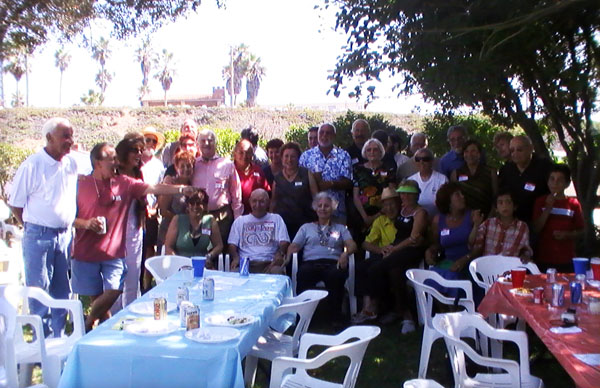
American Reform group grows in Mexico
By Gerry Greber
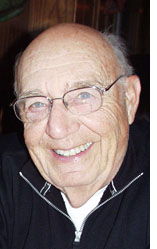 TIJUANA, Mexico—For two years, members of the “Bajavurah”—a contraction of “Baja” and “Chavurah”—have been meeting at each other’s homes or at public gathering spots in this Baja California city situated immediately across the border from San Diego. TIJUANA, Mexico—For two years, members of the “Bajavurah”—a contraction of “Baja” and “Chavurah”—have been meeting at each other’s homes or at public gathering spots in this Baja California city situated immediately across the border from San Diego.
Now, however, the group of expatriates and semi-expatriates is coming to a major transition. Later this month, the Bajavurah plans to conduct its own High Holiday services, traditionally a major step toward forming a more permanent congregation. Now counting a membership of 25 families, the Bajavurah plans to rename itself Congregation Baja Shalom. Unlike two other Jewish congregations in Tijuana, non-Hebrew readings will be in English rather than Spanish.
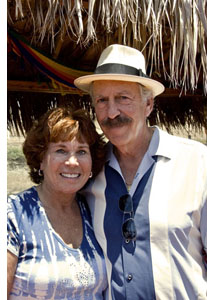 Gordon and Diane Kane, who live part-time in San Diego County, conducted me across the California-Baja California border last weekend to witness the Bajavurah at work and at play. They drove first to San Antonio del Mar, a gated residential development overlooking the Pacific Ocean, where we were greeted at the beautiful home of Lorraine and Peter Pontell, the group’s president (at right). Another member of the Bajavurah, Morrie Baker, joined us. Gordon and Diane Kane, who live part-time in San Diego County, conducted me across the California-Baja California border last weekend to witness the Bajavurah at work and at play. They drove first to San Antonio del Mar, a gated residential development overlooking the Pacific Ocean, where we were greeted at the beautiful home of Lorraine and Peter Pontell, the group’s president (at right). Another member of the Bajavurah, Morrie Baker, joined us.
The small committee’s work was to plan the details of the High Holiday services to be conducted by the Reform congregation at the famed Rosarito Beach Hotel, in the small city just to the south of Tijuana. It also planned such ancillary events as a dinner prior erev Rosh Hashanah services, and Tashlich services at Pontell’s oceanfront property. There will also be a congregational dinner prior to Kol Nidre services, and a break-the-fast event at the end of Yom Kippur.
The committee decided that in keeping with the sun-drenched Baja California lifestyle, it preferred a “very laid back service.” It decided that one of its members should serve as a lay service leader, and that another member should learn to blow the shofar. It was decided that rabbinical friends in San Diego County should be consulted on the possible contents for a sermon.
Further decisions were deferred in order for the committee to join other members of the Bajavurah who already were meeting at a park in the San Antonio del Mar area. The members greeted each other with hugs and laughter, and chatted with each other with an enthusiasm that I, as a visitor, found quite invigorating. The group has wonderful chemistry!
I learned that most of the congregants are Americans who maintain homes in various U.S. states, and that a handful are from such other nations as France and Canada. All of them have homes in the Tijuana/ Rosarito Beach area, which some plan to make their full-time residences.
Among the members are Art and Alita Serxner, who have lived for 15 years in a home with an ocean view, from which Alita, an artist, draws inspiration. Art describes Mexico as “the least anti-Semitic country.” Another member is Mavourneen O’Brien, whose father was the actor, Pat O’Brien. She will be participating in a 50-mile walkathon benefitting San Diego’s Multiple Sclerosis Society this weekend.
Many Jews from Mexico have resettled in the United States, even while maintaining their businesses in Tijuana. Some of them have cited fear of crime, particularly kidnapping for ransom that has plagued affluent families in Mexico, Jewish and non-Jewish alike. Yet, here are Jews moving from the United States to Mexico. Aren’t they worried about crime in Mexico? I raised this question with a number of individuals; all responded that they haven’t had such problems; that they feel secure in their Mexican homes. Furthermore, they said, they believe Mexico’s President Felipe Calderon is making positive strides in his country’s fight against drug traffickers.
They also praised the City of Tijuana’s decision to create a “Tourist Police” unit, to which tourists may make an appeal if they are stopped by regular police. This way, the tourists can avoid “paying the fine on the spot”—a euphemism for being required to pay a bribe.
Many, like the Kanes who have a home in Poway, California, commute regularly across the border. Special passes are available which enable them to cross the border in fifteen minutes or less.
Some of the Bajavurah members said there are economic incentives for living in Mexico. Taxes are much lower than they are in the United States. The costs of maintaining homes, and providing security for their gated communities, are lower. All of the individuals with whom I spoke said they have had no thefts or break-ins at their Mexican homes.
The Pontells are serving as an information outlet for the growing congregation. People who have questions about the congregation generally, or about attending High Holiday services specifically, are invited to contact them either by calling their Poway telephone number, (858) 679-9905, or their Tijuana telephone number, 011-52-664-631-3477. They also may be reached by email at bajapedro@aol.com.


L.A. BEAT
All is Vanities at Pasadena Playhouse
By Cynthia Citron
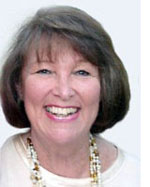 PASADENA, California—In 1980 one of the longest-running Off-Broadway productions closed after charming New York audiences for more than four and a half years. The play was Vanities, by Jack Heifner, and it followed the friendship of three young women from their high school years to middle age. PASADENA, California—In 1980 one of the longest-running Off-Broadway productions closed after charming New York audiences for more than four and a half years. The play was Vanities, by Jack Heifner, and it followed the friendship of three young women from their high school years to middle age.
Now, some 28 years later, this comedy-drama has been restyled as a musical with music and lyrics by David Kirshenbaum, staging by Dan Knechtges, and direction by two-time Tony Award-winning actress Judith Ivey.
The three stars, seen first as giddy pompom girls, are Mary, played by Lauren Kennedy, Joanne, played by Elizabeth Brackenbury, and Kathy, Anneliese van der Pol. Kathy, the consummate organizer, takes charge of everything, scattering lists and to-do sheets everywhere she goes. Joanne, even in high school, has her future set: she hopes to marry Ted, her steady boyfriend, and fill the house with their kids. Mary is the wild one, the flirtatious glamor girl who is dating her way through all the sports studs in school. The setting is a small Texas town in 1963 and the music that accompanies this introduction to the girls includes “Who Am I Today?” and “Hey There, Beautiful”, both of which serve to clarify their tentative identities at this stage of their lives.
In the next scene they are getting ready to graduate from college in Dallas, and fretting about whether the new crop of pledges will maintain the high standards of their sorority, Kappa Kappa Gamma, or KKG, which Joanne insists on translating as Keys to the Kingdom of God. They are excited about stepping off into the future as they sing, “We’re Gonna Be Okay.”
Having drifted apart, they meet again after 10 years on the terrace of Kathy’s elegant New York penthouse. She lives quietly, has given up her frenzied organizing, and seems to be depressed. “Once you lose your way,” she muses, “does the sadness stay?” Mary, on the other hand, is dressed in the latest fashion, owns an art gallery that specializes in porn and is dating a man who is “almost 20.” And Joanne has married Ted, filled her house with kids and has a drinking problem. She is wearing an outfit that could have come straight out of Dorothy’s closet in Oz. For the first time, these “best friends forever” begin to wonder what they ever saw in each other. Obviously, as they near 30 they apparently have little in common and their conversation is both hesitant and stiff.
Finally, they meet again in Texas in 1990 and, having mastered adulthood at long last, they sing a paean to the wisdom that comes with maturity. The song is called “Letting Go” and it’s a rousing number to close the show. Happily, all three women have strong melodious voices that actually do more for the songs than the music warrants. Despite the accompaniment of a fine eight-piece band, the songs don’t have the audience dancing in the aisles. What is it about modern musicals that leave you feeling that you wouldn’t recognize the songs if you heard them again two minutes after you left the theater? Where are today’s Rodgers and Hammerstein, the Gershwins, or even an Irving Berlin, for heaven’s sake!
Vanities – A New Musical is scheduled to open in New York in late February, 2009. But you can catch it here at the Pasadena Playhouse, 39 South El Molino Avenue, in Pasadena Tuesdays through Fridays at 8 p.m., Saturdays at 4 and 8, and Sundays at 2 and 7 through September 28th. For tickets, call (626) 356-PLAY.


Thursdays with the Songs of Hal Wingard
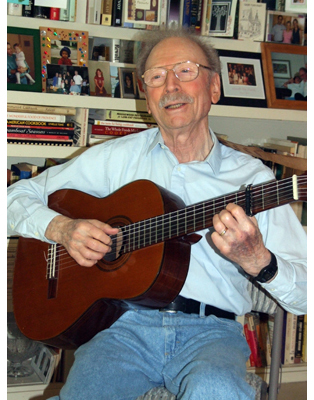 Editor's Note: We continue our presentation of the songs of Hal Wingard, moving this week to songs examining aspects of materialism. Here is a link to an index of Wingard's songs published by San Diego Jewish World. To hear Hal performing the song, click on its title. Editor's Note: We continue our presentation of the songs of Hal Wingard, moving this week to songs examining aspects of materialism. Here is a link to an index of Wingard's songs published by San Diego Jewish World. To hear Hal performing the song, click on its title.
#18, American Dream
If you have a lot--
An overflowing pot—
Who will blame you
Who will shame you,
Flaunting what you got?
But…if you feel a void,
Don’t be paranoid
Never sweat it,
You can get it.
Try your friendly Freud.
Psyches are not bare.
Something’s always there.
You won’t mind it,
If you find it
Deep in dust somewhere.
Then, without conceit,
Keep a tally sheet
Mark each merit
Proudly share it
With each friend you meet.
Hold our head up high.
Be a having guy.
Brush the dust off.
Wash the rust off.
Smile at passersby.
Use what is your lot,
Doesn’t matter what,
You can’t lose it,
If you use it.
Flaunt what you have got!
#23, Golden Shore
Golden highway going West--
On the go, I cannot rest
‘Till I reach the golden shore,
Then I’ll go no more.
I’ve been on the road so long,
I don’t know where I belong.
In my dreams I always see
Golden West for me.
I won’t roam
From my home
On the golden shore
Golden fruit upon the trees
Golden music in the breeze
Golden love beneath the sun,
Shared by ev’ryone.
There I’ll lie on golden sand,
Golden ladies close at hand.
Ev’ry wish they’ll always heed,
Knowing what I need.
I won’t roam
From my home
On the golden shore
Golden highway going West--
On the go, I cannot rest
‘Till I reach the golden shore.
Then I’ll go no more.
#113, The Two Dollar Diamond
One day I went out shopping
To buy my girl a gift
I knew that she was feeling low
And longing for a lift.
I wanted something special--
Rich and really nice--
A thing of lasting value at
An inexpensive price.
A $2.00 diamond
For $1.99
A $2.00 diamond.
The best that I could find.
The lady at the conter
Led me through the store,
Showed me tons of trashy things
And funky stuff galore.
But ev’ry item offered
Missed my girlfriend’s class
She’s not the type for paperweights
Made of plastic glass.
A $2.00 diamond
For $1.99
A $2.00 diamond
The best that I could find.
She searched below the counter.
She ransacked ev’ry drawer
To find the extra special gift
That I was looking for.
She combed through hidden crannies,
Examined ev’ry nook.
Yet nothing seemed to meet the mark,
No matter where she’d look.
A $2.00 diamond
For $1.99
A $2.00 diamond
The best that I could find.
In gloom and desperation
I headed out the door,
When guess what happened as I passed
The window of the store!
A tiny object sparkled.
Its dazzle caught my eye.
I knew then I’d found the gift,
The one I had to buy.
A $2.00 diamond
For $1.99,
A. $2.00 diamond,
The best…
Oh, yes, you guessed…
It passed the test…
‘Twas the best that I could find.


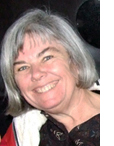 Nancy Harrison Nancy Harrison
cruise & tour specialist
(619) 265-0808
.

ADVENTURES IN SAN DIEGO JEWISH HISTORY
Editor's Note: To create a permanent and accessible archive, we are reprinting news articles that appeared in back issues of various San Diego Jewish newspapers. You may access an index of the headlines of those articles by clicking here. You may also use the Google search program on our home page or on the headline index page to search for keywords or names.
Tifereth Israel Junior League
From Southwestern Jewish Press, December 30, 1949, page 7
At an enthusiastic and lively meeting held Saturday, December 24th, a Junior Young People’s League was organized at Tifereth Israel Synagogue. This group is open to boys and girls of Junior High school age, who desire to participate in a program of social and recreational activities coupled with religious and cultural interests. Officers elected to lead the young people during the first term are: Cecile Oglesby, President; Geraldine Solomon, Vice-President; David Levens, Secretary; Sherry Newman, Corresponding Secretary and Norman Panish, Treasurer. Besides the business, games, dancing and refreshments rounded out an enjoyable evening.
The group will meet every other Saturday night, at 7 p.m., with the next meeting scheduled for January 7th. All young people of the proper age are cordially welcome.
Council Nominates Officers for 1950
From Southwestern Jewish Press, December 30, 1949, page 7
The recently formed San Diego Jewish Youth Council has conducted top grade activities and programs since it began several months ago.
Under the sponsorship of the Community center, six youth organizations of the Youth Council are Aleph Zadik Aleph, B’nai B’rith Girls, Temple Youth League, Massadah, Hillel and the Young People’s League.
A series of Youth Canteens have provided dancing and entertainment pleasure for several hundred youth. The Succoth Camporee which was run over a weekend at Camp Cuyamaca was a novel enjoyable experience for those who attended.
At the last session of the Youth Council, a slate of nominees was drawn up for 1950 as follows: Bob Waller, Norman Holtzman, Preisdent; Ronnie Greenberg, Herb Solomon, Bob Waller, Vice President; Frances Winicki, Esther Weitzman, Secretary-treasurer.
Election will be held at the next meeting of the Youth Council on Thursday evening, January 5 at the Temple Center.
Memorial Altar Fund Drive Progressing
From Southwestern Jewish Press, December 30, 1949, page 8
According to Mr. Murray D. Goodrich, chairman of the Bergman Memorial Altar Fund Committee of Temple Beth Israel, plans for the building of the beautiful altar in loving memory of the late Rabbi Moishe Bergman are progressing satisfactorily.
In a recent statement, MR. Goodrich stated, “During the past two weeks several sizeable and generous contributions have been received from friends and admirers of our beloved late Rabbi, and shortly after the first of the year we expect to intensify the drive to the point where the entire Congregation will participate.
A beautiful new altar in keeping with the stately beauty of the rest of the Temple has long been the dream of the Rabbi and Board of Directors. It is hoped that the dream of the Rabbi will soon become a reality. The total cost of the altar, plus some needed renovations in the Temple and vestibules, is expected to approach $15,000.
Members of the Temple are urged to make their contributions as early as possible, and send them to the Temple office.
Rabbi Cohn To Review ‘Why Jesus Died’
From Southwestern Jewish Press, December 30, 1949, page 8
At the regular Sabbath evening service of Temple Beth Israel this Friday evening, December 30th, at 8 p.m., Rabbi Morton J. Cohn will review the interesting and startling new book, “Why Jesus Died” by Pierre van Passen.
The author is one of the most prominent liberal religious leaders in American life and is best known among American Jewry for his early and ardent espousal of the cause of a Jewish homeland in Palestine. San Diegans will remember that Mr. Van Paassen addressed the Jewish community last year, under the auspices of the United Jewish Appeal. In the near future he will appear before the Unitarian Forum here.
At the services the new choir will sing under the direction of Cantor Julian K. Miller.
{Return to top}






SAN DIEGO JEWISH WORLD: THE WEEK IN REVIEW
International
Children try to persuade parents to make aliyah from war-torn Georgia by Idan Peysahovich
Special Report: Internet AntiSemitism by Debora Stone in Canberra, Australia
The Jews Down Under, a roundup of Australian Jewish news by Garry Fabian in Melbourne:
—Year-long Israel odyssey inspires teacher
—NSW Premier announces security funding boost
—ECAJ President named to Claims Conference
—MP petitions Deputy Prime Minister to ban blog
—ADC calls for action against broadcasts
—Western Australian Jewish Community expands
—Central Synagogue feted with a grand concert
—Local lobby group apologizes
San Diego County
Neo-Nazi graffiti again plagues Ner Tamid by Donald H. Harrison in Poway, California
San Diego Jewish History
Adventures in San Diego Jewish History:
—December 30, 1949: J.C.R.A. by Anna Brooks
—December 30, 1949:Congregation Beth Jacob
—December 30, 1949:Beth Jacob Ladies Auxiliary
—December 30, 1949: Tifereth Israel Sisterhood
Arts
The Actors’ Gang brings the dead to life by Cynthia Citron in Culver City, California
International
Problems in U.S., Israel known; likely responses of leading candidates aren't by Ira Sharkansky in Jerusalem
Unusual ceremonies scheduled for Ramadan in Jerusalem and lifesaving at the Dead Sea by Judy Lash Balint in Jerusalem
San Diego County
Congregation Beth Am picnics on the green by Donald H. Harrison in San Diego
One of Jewish San Diego's favorite columnists walks—and writes!—again It's Gert Thaler in San Diego
San Diego Jewish History
Adventures in San Diego Jewish History:
— December 30, 1949:Jewish War Veterans of the United States by Binnie Brooks
— December 30, 1949:San Diego Birdie Stodel B’nai Brith Chapter No. 92 by Bess Borushek
— December 30, 1949:Senior Pioneer (Negba) Club
— December 30, 1949: Hadassah
Arts
Music of Our People, a collection of Jewish songs performed by Cantor Sheldon Merel of San Diego, debuts today on San Diego Jewish World with Adon Olam
by Rabbi Dow Marmur in Toronto, Canadaby Donald H. Harrison in San Diegoby Sheila Orysiek in San DiegoArrival of family from Israel prompts the brit debate:by Carol Davis in San DiegoDecember 30, 1949: December 39, 1949:December 30, 1949December 30, 1949: San Diego Hebrew Home Auxiliary
Internationalby Idan Peysahovich in Tbilisi, Georgiaby Rabbi Baruch Lederman in San DiegoNationalby Matthew Brooks in Washington, D.C.Campaign 2008: NJDC rejects RJC critique of Biden by Ira Forman in Washington D.C.
Judaismby Rabbi Leonard Rosenthal in San Diegoby Natasha Josefowitz in La Jolla, CaliforniaSan Diego Jewish HistorySan Diego Jewish World seeks historic newspapers to archive on the webAdventures in San Diego Jewish History:—December 16, 1949: Beth Jacob P.T.A.
—December 16, 1949: Youth Groups to Stage Chanu-Kapers
—December 16, 1949: Temple Sisterhood
—December 30, 1949: Federation Plans Community Survey
—December 30, 1949: Community to Know Allocations Before Campaign Begins
Tough interview: a jet-lagged grandson, 7 by Donald H. Harrison in San Diegoby Sheila Orysiek in San DiegoSan Diego Jewish World seeks historic newspapers to archive on the webAdventures in San Diego Jewish Historyby Henry Bowmanby Binni Brooksby Bess BoroshekInternationalCampaign 2008: Biden wrong on Iran, inconsistent on Israel by Matt Brooks in Washington, D.CThe 'Leviticus Trapsby David Benkof in New York
EducationSan Diego Jewish World seeks historic newspapers to archive on the webAdventures in San Diego Jewish History:
—December 16, 1949: December 16, 1949:December 16, 1949: December 16, 1949:#217,#200,#2, Emperor's New Clothes
Link to previous editions
< BACK TO TOP
Copyright 2007-2008 - San Diego Jewish World, San Diego, California. All rights reserved. |
|

